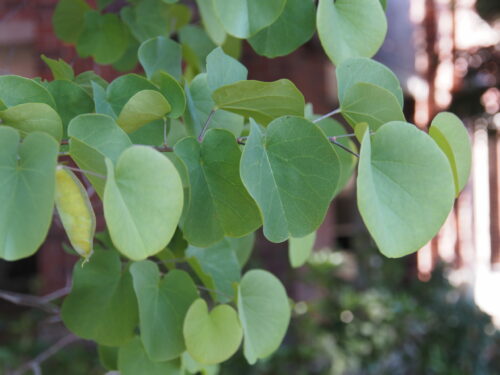Water conservation is an essential consideration when designing and managing Sonoma and Marin County landscapes. Our area enjoys a Mediterranean climate characterized by wet winters and long, dry summers with little rainfall. Plants that are suited or adapted to local conditions not only use less water but generally grow more successfully and robustly, with fewer insect and disease problems. They ultimately create a healthier, more beautiful and more sustainable landscape.
Below is a hand selected plant list for Sonoma and Marin counties that displays mostly native species that will thrive in our climate. You can search, filter and save specific plants to your plant list and also print plant cards.
-
California Native
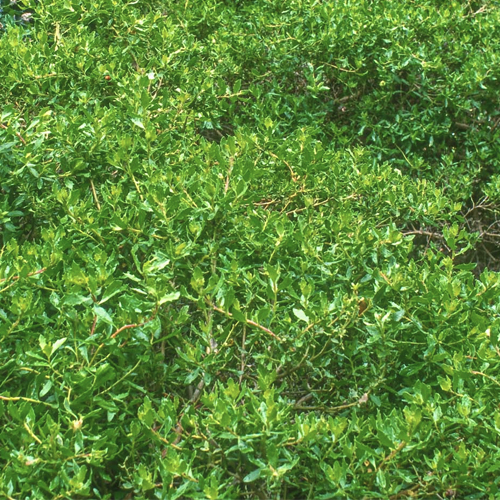
Dwarf Coyote Bush
Baccharis pilularis & cvs -
California Native
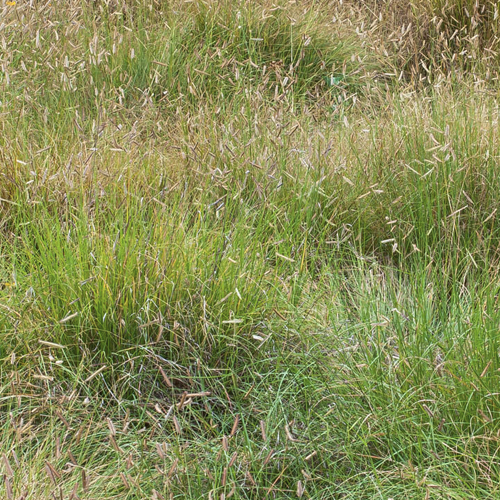
Blue Grama Grass
Bouteloua gracilis -
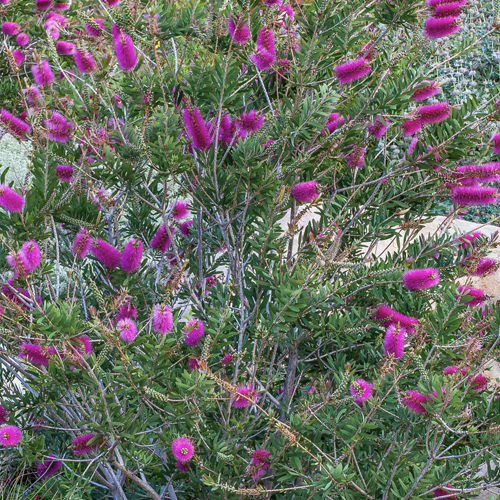
Bottlebrush
Callistemon spp & cvs -
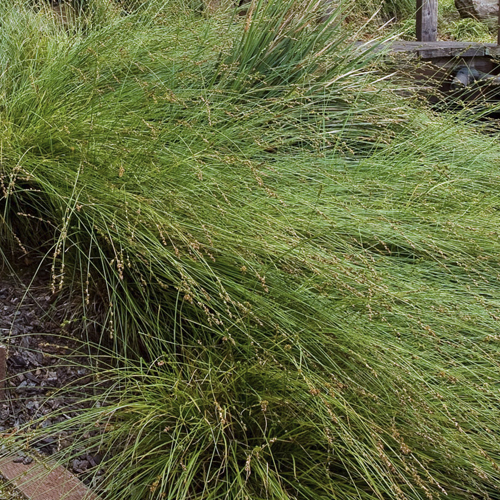
Sedge
Carex spp -
California Native
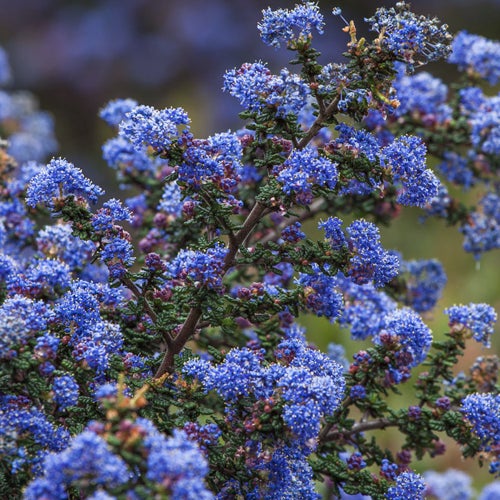
Ceanothus, California lilac, 'Ray Hartman'
Ceanothus spp & cvs -
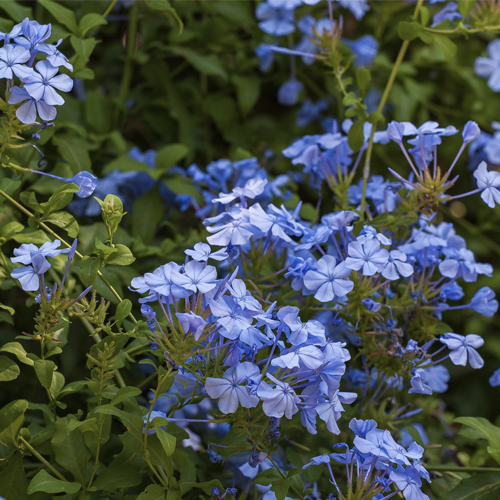
Plumbago
Ceratostigma spp -
California Native
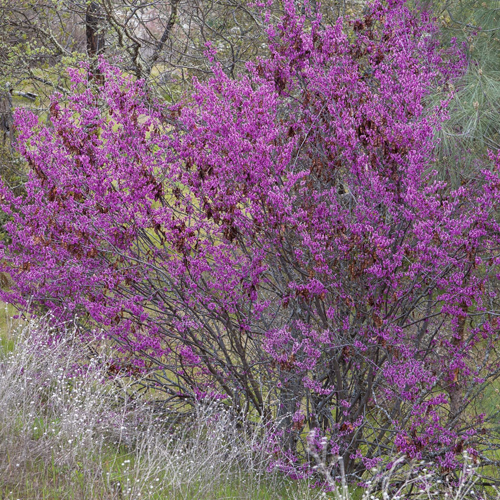
Western Redbud
Cercis occidentalis -
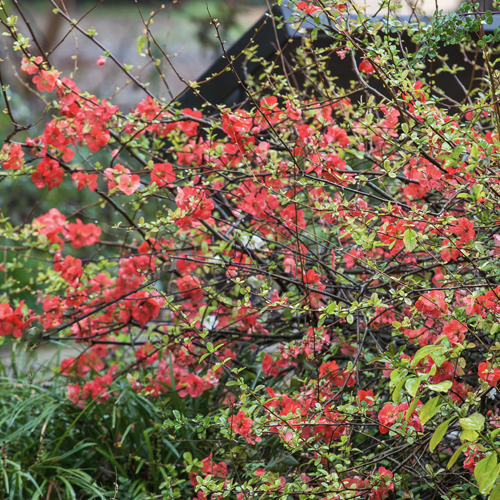
Flowering Quince
Chaenomeles spp -
California Native
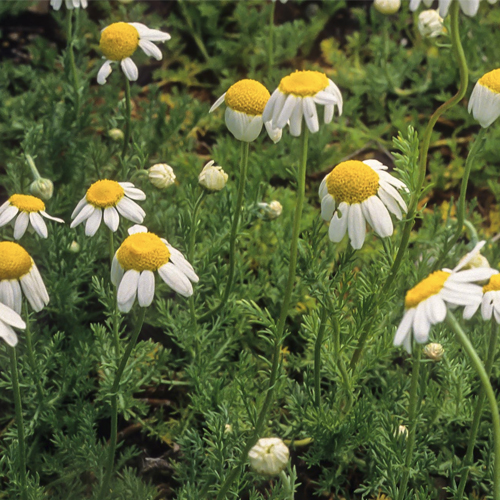
Chamomile
Chamaemelum nobile -
California Native
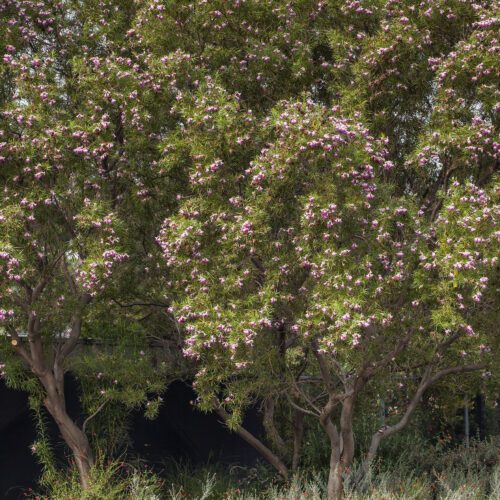
Desert Willow
Chilopsis linearis -
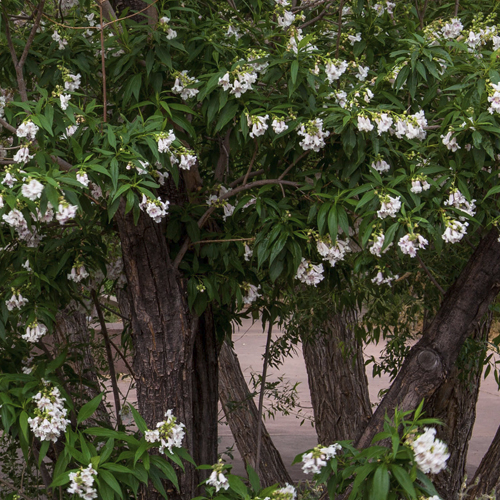
Chitalpa
Chitalpa tashkentensis -
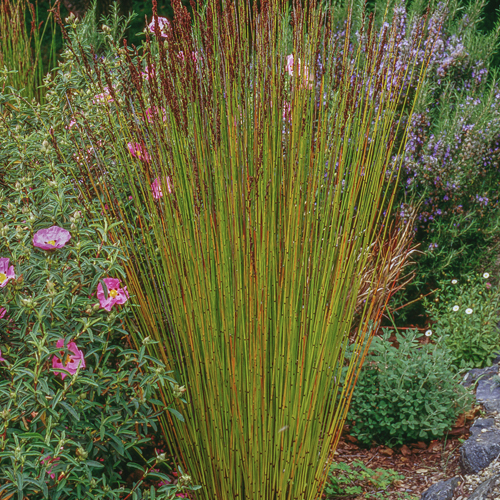
Cape Reed, Cape Rush
Chondropetalum tectorum


Dwarf Coyote Bush
Baccharis pilularis & cvs
CA Native, Ground Cover, Shrub
Care:

Full Sun

Low

Most Soils
Look:

Medium
size

Green - Dark
leaves

White
flowers
Dwarf Coyote Bush
Baccharis pilularis & cvs
CA Native, Ground Cover, Shrub
Care:

Full Sun

Low

Most Soils
Look:

Medium
size

Green - Dark
leaves

White
flowers
Flowers are inconspicuous but provide a source of pollen, nectar, and seeds for wildlife. Shrubby varieties can be cut back to maintain a more tidy and compact appearance. Perennial varieties can be divided in fall or early spring. Excellent choice as support for more showy plants in the garden.


Blue Grama Grass
Bouteloua gracilis
CA Native, Grass
Care:

Full Sun

Low

Well Drained
Look:

Small
size

Green
leaves

Yellow
flowers
Blue Grama Grass
Bouteloua gracilis
CA Native, Grass
Care:

Full Sun

Low

Well Drained
Look:

Small
size

Green
leaves

Yellow
flowers
North American native, warm-season bunchgrass with narrow, grayish green leaves. Ornamental flowers like small brushes form at right angles to slender stems during the summer and persist for many months. Blue grama is adapted to heat, drought, cold, and foot traffic. It does not thrive in shade or wet soils. Blue grama can be used in small clumps among other plants, in a mass as part of a meadow, or even as a lawn substitute. B. g. ‘Blonde Ambition’ is a popular and robust cultivar.


Bottlebrush
Callistemon spp & cvs
Shrub
Care:

Full Sun

Partial Shade

Low

Well Drained
Look:

Green
leaves

Red
flowers
Bottlebrush
Callistemon spp & cvs
Shrub
Care:

Full Sun

Partial Shade

Low

Well Drained
Look:

Green
leaves

Red
flowers
Popular Australian evergreen shrub or small tree attractive to hummingbirds, butterflies, and bees typically for bright red flowers that resemble a bottle brush. Flowering begins in spring and continues into fall. Bottlebrush will tolerate many garden conditions and exposures and is tolerant of dry conditions once established. Shrub varieties can be pruned to an informal hedge or be left to show their natural shape.
Examples: Lemon bottlebrush (C. citrinus, 6-12’ x 8-12’) is the most commonly grown species in California. Weeping bottlebrush (C. viminalis, 20’ x 15’) has pendulous branches. C. viminalis ‘Little John’ (3-5’ x 4-6’) is a low-growing, mounding form with deep red flowers that is popular as a foundation or accent plant.


Sedge
Carex spp
Grass
Care:

Full Sun

Partial Shade

Low

Most Soils
Look:

Medium
size

Small
size

Yellow
leaves
Sedge
Carex spp
Grass
Care:

Full Sun

Partial Shade

Low

Most Soils
Look:

Medium
size

Small
size

Yellow
leaves
Large group of grass-like, clumping plants with low or moderate water needs that are native to many parts of the world and offer a variety of shapes, sizes, and foliage characteristics. Some sedges are ideal for use in rain gardens and swales, for stabilizing slopes, as a mass groundcover, or as part of a meadow planting. Two low-water examples that prefer some shade are Catlin sedge (C. texensis, 4-6” x 6-8”), a small, mat-like sedge native to central and southwestern North America, and Berkeley sedge (C. tumulicola, 1-2’ x 1-2’), a larger species native to western North America that tends to self-sow. Other species require more water and may be less suited to dry inland conditions. Some species can be invasive and difficult to control.


Ceanothus, California lilac, 'Ray Hartman'
Ceanothus spp & cvs
CA Native, Ground Cover, Shrub, Tree
Care:

Full Sun

Partial Shade

Very Low

Low

Well Drained
Look:

Large
size

Medium
size

Green
leaves

Green - Dark
leaves

Blue
flowers

White
flowers
Ceanothus, California lilac, 'Ray Hartman'
Ceanothus spp & cvs
CA Native, Ground Cover, Shrub, Tree
Care:

Full Sun

Partial Shade

Very Low

Low

Well Drained
Look:

Large
size

Medium
size

Green
leaves

Green - Dark
leaves

Blue
flowers

White
flowers
Ceanothus is a group of fast-growing, evergreen shrubs that vary from groundcovers to small trees, many of which are native to California. They provide a spectacular display of flowers in spring that will attract a multitude of pollinators. Flowers are followed by seeds that provide food for birds. The clusters of tiny flowers range from white to deep violet. Plants perform best with good drainage and minimal irrigation once established. Some do best in cooler coastal climates, but many thrive in hotter inland climates. Pay close attention to the mature size when selecting ceanothus to ensure that it has sufficient space for its natural form.
Groundcovers: C. ‘Centennial’ (1’ x 8’), C. gloriosus var. gloriosus ‘Anchor Bay’ (2’ x 8’), C. griseus var. horizontalis ‘Diamond Heights’ (variegated, 1’ x 4’), C. griseus var. horizontalis ‘Yankee Point’ (3’ x 12’), C. maritimus (2’ x 6’).
Shrubs: C. ‘Blue Jeans’ (6’ x 6’), C. Concha (6’ x 6’), C. ‘Dark Star’ (6’ x 8’), C. ‘Joyce Coulter’ (4’ x 12’), C. ‘Julia Phelps’ (8’ x 10’), C. cuneatus (8’ x 8’), C. thyrsiflorus ‘Skylark’ (4’ x 6’).
Large shrubs: C. ‘Frosty Blue’ (10’ x 12’), C. thyrsiflorus (20’ x 20’), C. t. ‘Snow Flurry’ (white flower, 20’ x 20’).
Trees: C. ‘Ray Hartman’ (15′ x 15′)


Plumbago
Ceratostigma spp
Ground Cover, Shrub
Care:

Full Sun

Partial Shade

Low

Well Drained
Look:

Bronze
leaves

Green
leaves

Blue
flowers
Plumbago
Ceratostigma spp
Ground Cover, Shrub
Care:

Full Sun

Partial Shade

Low

Well Drained
Look:

Bronze
leaves

Green
leaves

Blue
flowers
This small group of herbaceous, flowering perennials is valued for clusters of intense blue flowers in summer and fall. Two widely available low-water species are shrubby Burmese plumbago (C. griffithii, 2-4’ x 2-6’) and the popular groundcover, dwarf plumbago (C. plumbaginoides, 6-12”, spreading to 3-4’).


Western Redbud
Cercis occidentalis
CA Native, Tree
Care:

Full Sun

Partial Shade

Very Low

Most Soils
Look:

Small
size

Green
leaves

Violet
flowers
Western Redbud
Cercis occidentalis
CA Native, Tree
Care:

Full Sun

Partial Shade

Very Low

Most Soils
Look:

Small
size

Green
leaves

Violet
flowers
Western redbud is an ornamental, multi-trunked and deciduous, large shrub or small tree with year-round interest that provides a California native and very low-water alternative to the moderate-water Cercis canadensis. Magenta to rosy pink blossoms that resemble pea flowers cover bare branches in late winter to early spring. Apple green, heart-shaped leaves emerge to accompany the flowers. Over the summer, the leaves become more leathery and bluish green, and seed pods mature and remain into the winter months.


Flowering Quince
Chaenomeles spp
Shrub
Care:

Full Sun

Partial Shade

Low

Sandy
Look:

Green
leaves

Orange
flowers

Red
flowers
Flowering Quince
Chaenomeles spp
Shrub
Care:

Full Sun

Partial Shade

Low

Sandy
Look:

Green
leaves

Orange
flowers

Red
flowers
Early-flowering, deciduous shrubs that grow wider than they do tall. Stiff, spiny branches produce clusters of flowers that are often pale pink, red, or white. Fruit can be made into preserves. Check with local nurseries for cultivars with different forms and flowers, some of which are nearly thornless.


Chamomile
Chamaemelum nobile
CA Native, Ground Cover
Care:

Full Sun

Partial Shade

Low

Well Drained
Look:

Green
leaves

Green
flowers

Yellow
flowers
Chamomile
Chamaemelum nobile
CA Native, Ground Cover
Care:

Full Sun

Partial Shade

Low

Well Drained
Look:

Green
leaves

Green
flowers

Yellow
flowers
Spreading perennial with soft-textured leaves that can be used as a groundcover, along pathways, or between flagstones. Flowers vary by variety from daisy-like to small, yellow buttons. C. n. ‘Flore Pleno’ has white double flowers and C. n. ‘Treneague’ is a non-flowering variety.


Desert Willow
Chilopsis linearis
CA Native, Tree
Care:

Full Sun

Very Low

Low

Well Drained
Look:

Small
size

Gray Green
leaves

Green
leaves

Pink
flowers

Purple
flowers

White
flowers
Desert Willow
Chilopsis linearis
CA Native, Tree
Care:

Full Sun

Very Low

Low

Well Drained
Look:

Small
size

Gray Green
leaves

Green
leaves

Pink
flowers

Purple
flowers

White
flowers
Chilopsis linearis is a deciduous shrub or small tree. Noted for fragrant, showy flowers in the spring and summer seasons. They are often multitrunked and fast-growing getting up to 15-30 feet tall and 10-20 feet wide. Holds foliage with occasional summer irrigation.


Chitalpa
Chitalpa tashkentensis
Tree
Care:

Full Sun

Low

Well Drained
Look:

Green
leaves

White
leaves
Chitalpa
Chitalpa tashkentensis
Tree
Care:

Full Sun

Low

Well Drained
Look:

Green
leaves

White
leaves
Fast-growing, medium-sized, deciduous tree with clusters of showy trumpet-shaped flowers from late spring to fall. Chitalpa is a sterile hybrid between Catalpa bignonioides, common catalpa, and Chilopsis linearis, desert willow. It combines the larger flowers of the former and the drought-tolerance of the latter. Since the flowers are sterile, they do not form seed pods or fruit. There are two popular cultivars, ‘Pink Dawn’ with lavender-pink flowers and ‘Morning Cloud’ with white flowers.


Cape Reed, Cape Rush
Chondropetalum tectorum
Care:

Full Sun

Partial Shade

Low

Well Drained
Look:

Green
leaves

Yellow
flowers
Cape Reed, Cape Rush
Chondropetalum tectorum
Care:

Full Sun

Partial Shade

Low

Well Drained
Look:

Green
leaves

Yellow
flowers
Clumping perennial with stiff, upright, jointed stems that contrast well with other plants. Tan-colored bracts form at the stem joints in summer and fall, providing a striking display. Two species from South Africa grow well in California gardens, especially in rain gardens and swales since they will tolerate both standing water and dry conditions, once established. C. elephantinum (4-5’ x 4-10’) is the larger of the two, C. tectorum (3-4’ x 3-5’) is more suitable for smaller spaces.
 Print this plant card
Print this plant card
